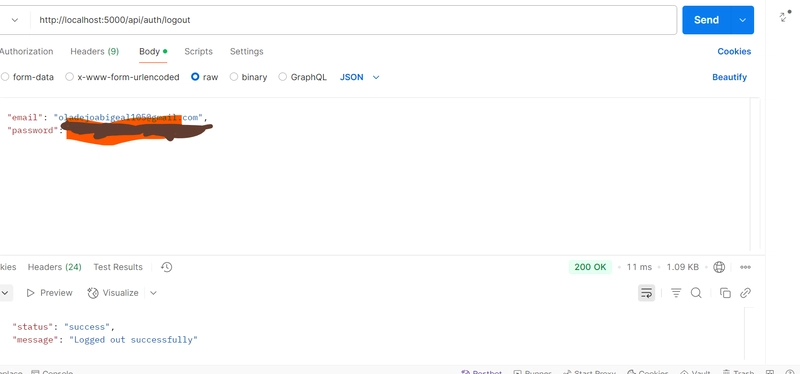Have you ever felt like you're fighting with your own APIs? As a backend developer, I sure did... until I learned to stop debugging through the frontend and start talking directly to my APIs instead.
The DELETE request that changed everything
Last month, I was building a backend for a mocktail ordering system. Everything was in place:
// Our beautiful API endpoints
app.post('/api/auth/register', registerUser);
app.get('/api/auth/logout', logoutUser);
app.get('/api/products', getProducts);
app.post('/api/events', createEvent);
app.post('/api/orders', createOrder);
app.get('/api/invoices', getInvoices);
app.get('/api/payments/history', getPaymentHistory);
app.delete('/api/users/:id', deleteUser);
Then the moment of truth came: testing the "Delete Account" feature. Click... and nothing happened. No error, no confirmation, nothing.
My first instinct was to dive back into my Node.js code and console.log everything. But then I remembered: This is exactly what Postman was made for.
One simple DELETE request to http://localhost:5000/api/users/:id later, I had my answer:
{
"message": "Not logged in"
}
Status code: 401 Unauthorized
The API was working perfectly! The frontend just wasn't passing the auth token. What would have been hours of debugging turned into a simple conversation with my API.
The backend developer's debugging dilemma
Let's be honest, our typical debugging flow used to be:
- Change code
- Restart the server (every... single... time)
- Refresh the frontend
- Click around to trigger the API call
- Shrug when it doesn't work
- Add more console.logs
- Repeat until frustrated
Sound familiar? It's like trying to fix a car engine by only looking at the dashboard. You need to open the hood!
5 ways Postman transformed my backend development
1. Testing middleware in isolation
Instead of wondering if my auth middleware was the problem, I could test it directly:
// Request without token
GET /api/protected/resource
// 401 response
// Request with token
GET /api/protected/resource
Authorization: Bearer eyJhbGciOiJ...
// 200 response
Boom! Instant feedback on exactly how my middleware was behaving.
2. Proper database integration testing
With Postman collections, I could test my entire CRUD cycle:
- Create a resource (POST)
- Read it back (GET)
- Update it (PUT)
- Verify changes (GET again)
- Delete it (DELETE)
- Confirm deletion (GET should 404)
This caught subtle issues like missing cascade deletions and incorrect foreign key constraints that would have been painful to find through the UI.
3. Automated test cases
In the Postman Tests tab:
pm.test("Response should be paginated", function() {
const response = pm.response.json();
pm.expect(response).to.have.property('page');
pm.expect(response).to.have.property('totalPages');
pm.expect(response).to.have.property('items');
pm.expect(response.items).to.be.an('array');
});
These tests became the foundation for my CI pipeline later.
4. Better API architecture
The direct feedback loop made me notice flaws in my API design:
// Before: Deeply nested and confusing
GET /api/user/5/orders/active
// After: Query parameters FTW
GET /api/orders?userId=5&status=active
I also implemented a standardized error format:
{
"error": {
"code": "RESOURCE_NOT_FOUND",
"message": "The requested product does not exist",
"details": { "productId": 12 }
}
}
5. Performance insights
Postman's response time metrics helped me spot bottlenecks before they hit production:
Status: 200 OK
Time: 2543 ms 🚩 Yikes!

This led me to add proper indexing to my database before users experienced the slowdown.
The psychological shift
The biggest change? My mindset. With Postman:
- I'm confident my APIs work (or I know exactly why they don't)
- I debug methodically instead of randomly
- I document as I go instead of leaving it for "later" (never)
My challenge to you
If you're still debugging your backend through your frontend, I challenge you to try the "Postman-first" approach:
- Build one endpoint
- Test it thoroughly in Postman
- Document it
- Only then connect it to your frontend
Your future self (and your frontend teammates) will thank you.
What's your API debugging process like? I'd love to hear about your experiences in the comments!

